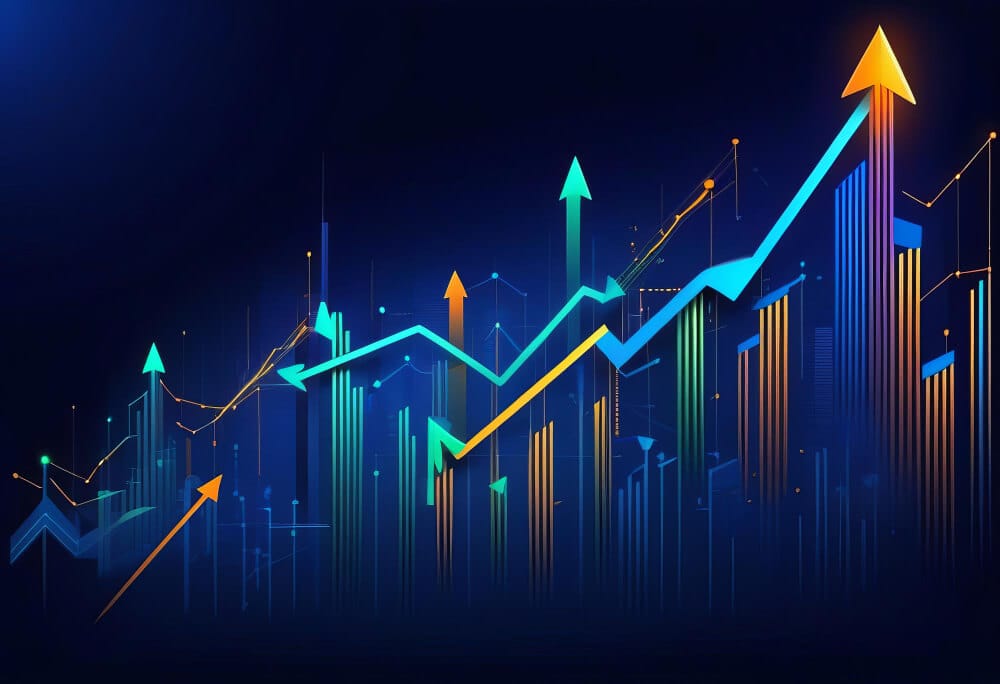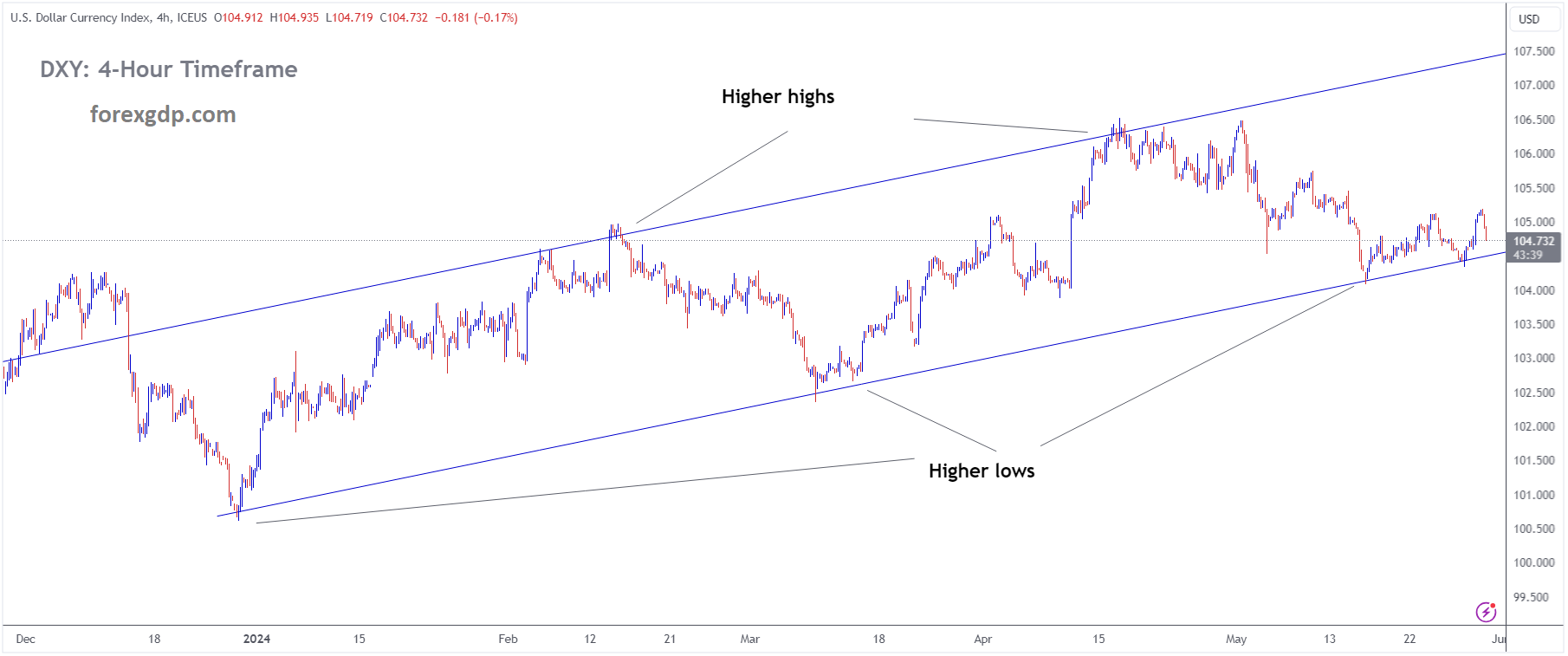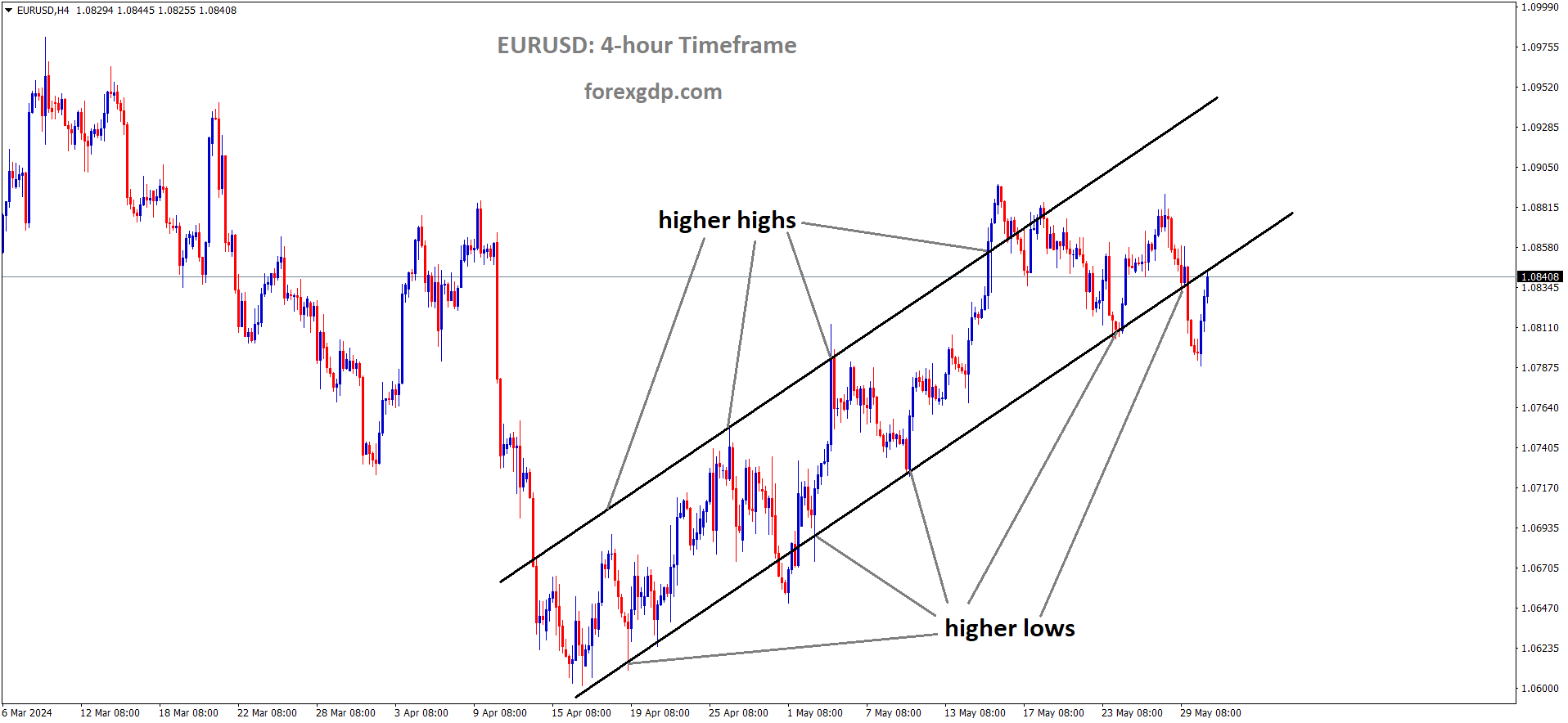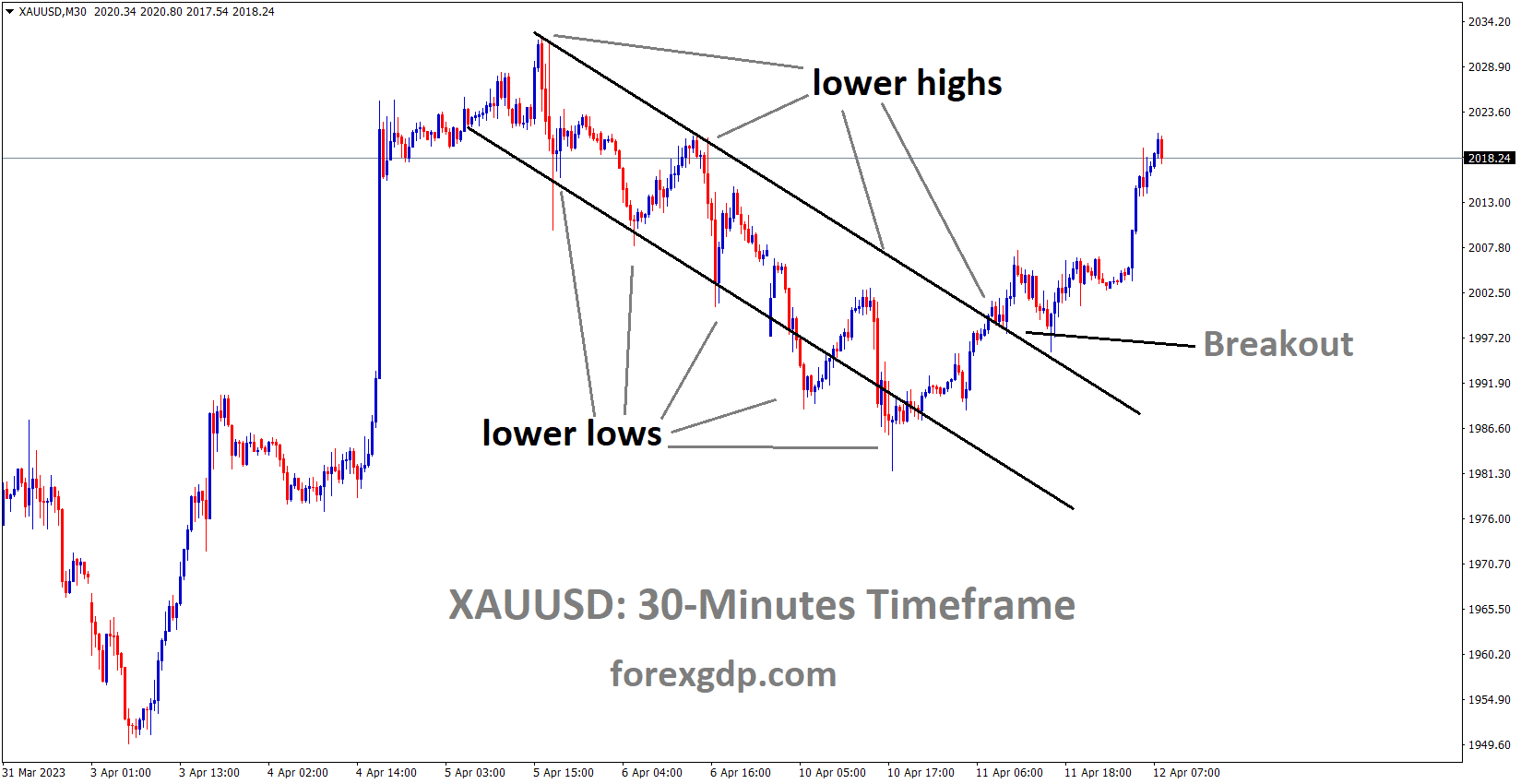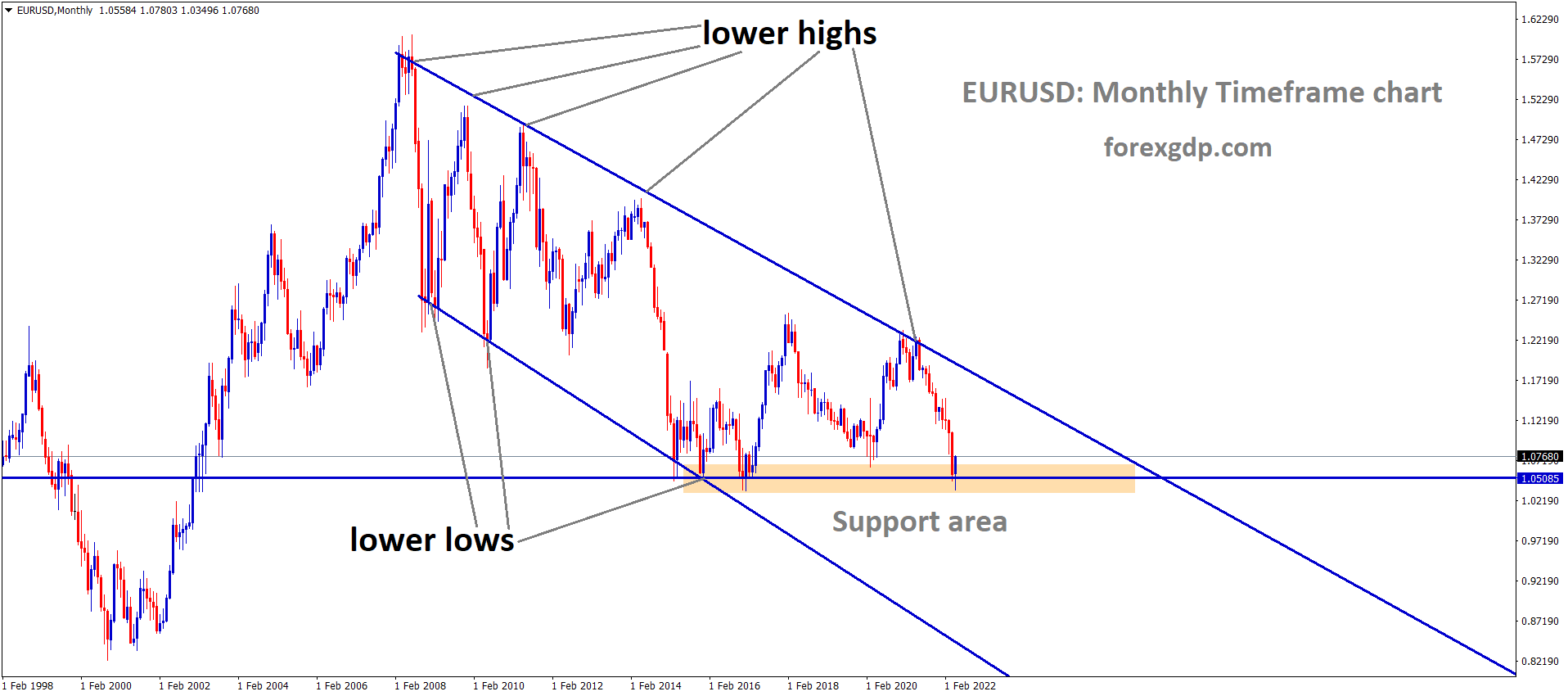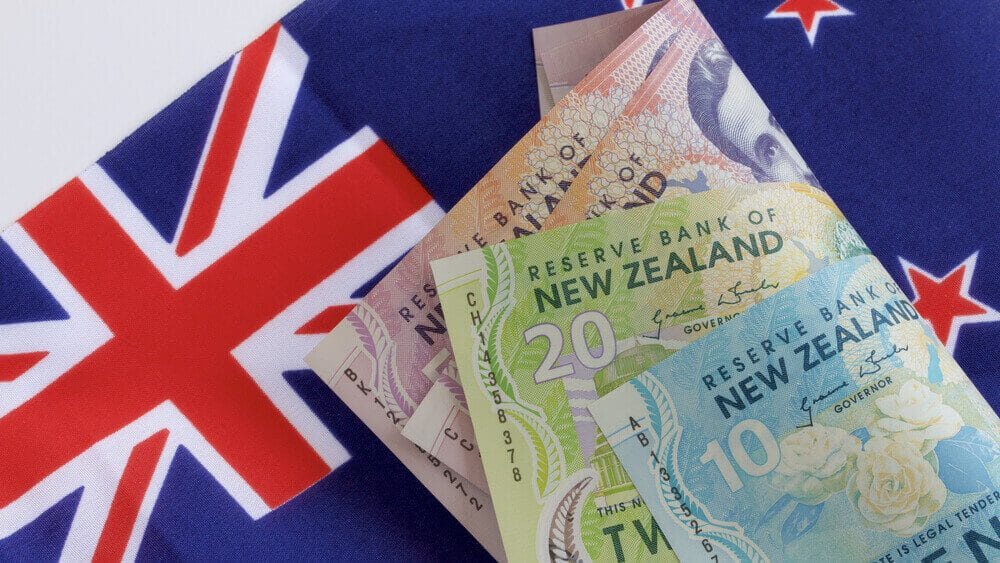USD: US Q1 GDP at 1.3%, Q2 Optimism Prevails
The US Q1 GDP data came at 1.3% QoQ versus 1.6% QoQ expected and 3.4% printed in the past quarter. Goldman Sachs predicted next Q2 Quarter 2024 will be higher than this reading will be 3.2%. CPI inflation downturn in the April month brings the consumer spending lower and give blast to GDP downturn reading. But US Economy is performing well in all other economic factors, rate cuts is expected in September month is increasing Confidence due to weaker Q1 GDP, Weaker inflation in the April month.

USDCHF is moving in Ascending channel and market has reached higher low area of the channel
The US economy expanded at a slower rate than initially estimated during the first quarter of the year.
The Bureau of Economic Analysis (BEA) released its second estimate of the US gross domestic product (GDP) for the first quarter, revealing that the economy grew at an annualized pace of 1.3%. This figure is lower than the initial reading of 1.6% growth reported in April and aligns with economists’ expectations.
The downward revision to the first-quarter growth primarily stems from a decrease in consumer spending, according to the BEA. Personal consumption during the period expanded by 2%, down from the previously reported 2.5%.
Compared to the fourth quarter, which saw GDP revised upward to 3.4%, the first-quarter growth rate appears significantly weaker.
Nationwide financial markets economist Oren Klachkin commented on the revised Q1 GDP data, noting that while the headline growth statistic may seem discouraging, there is solid underlying momentum in the economy’s core, with private domestic sales to domestic purchasers showing a healthy expansion of 2.5% annualized.
The slowdown in GDP growth comes amid market sensitivity to indicators suggesting the economy might be overheating, particularly as inflation has proven stickier than expected. Concerns arise that rapid economic growth could fuel further price increases.
However, many forecasters do not view the first-quarter economic slowdown as indicative of a broader trend. Goldman Sachs, for instance, anticipates 3.2% annualized growth in the second quarter, while the Atlanta Fed’s GDPNow forecaster projects 3.5% annualized growth for the same period.
Klachkin remains optimistic about future economic prospects, citing monthly data beyond March that indicate a continued, albeit gently cooling, economic expansion. He anticipates sustained GDP gains throughout this year and healthy advancement in 2024 overall.
USD: US First Quarter GDP Growth Revised Down to 1.3%
The US first-quarter GDP growth rate was reported at 1.3% quarter-on-quarter (QoQ), falling short of the expected 1.6% QoQ and the previous quarter’s 3.4% print. Goldman Sachs anticipates a higher growth rate of 3.2% for the second quarter of 2024.
USD Index Market price is moving in Ascending channel and market has reached higher low area of the channel
A downturn in the Consumer Price Index (CPI) inflation during April contributed to lower consumer spending, resulting in a decrease in GDP growth. However, despite the weaker-than-expected GDP and inflation figures, the US economy is performing well across other economic indicators. The anticipation of rate cuts in September is bolstering confidence in the economy, serving as a response to the weaker first-quarter GDP and inflation readings.
The US Bureau of Economic Analysis (BEA) released its second estimate of the country’s real Gross Domestic Product (GDP) for the first quarter, revealing an annual growth rate of 1.3%. This figure marks a downward revision from the initial estimate of 1.6% growth and aligns with market expectations.
According to the BEA, the revision to the GDP estimate was influenced by various factors. Downward revisions were observed in consumer spending, private inventory investment, and federal government spending. However, these were partially offset by upward revisions in state and local government spending, nonresidential fixed investment, residential fixed investment, and exports. Additionally, imports were revised upward.
USD: Fed Inflation Rate Revised Down, GDP Growth Slows, S&P 500 Cuts Losses
In the first quarter, the US GDP grew by 1.3%, which was lower than the expected 1.6%. Last quarter, it was higher at 3.4%. Looking ahead, Goldman Sachs predicts a growth of 3.2% for the second quarter of 2024.
EURUSD is moving in an Ascending channel and the market has rebounded from the higher low area of the channel
A decrease in consumer spending caused by lower inflation in April led to the weaker GDP growth. However, despite this, the overall US economy is doing well in other areas. There’s confidence that the economy will bounce back, especially with expectations of rate cuts in September.
The government’s second estimate of GDP growth revealed that the key Federal Reserve inflation rate was revised lower for the first quarter, coinciding with a slower-than-expected performance of the U.S. economy. Additionally, initial jobless claims saw a slight increase. Following the release of this data, the S&P 500 managed to reduce losses that had accrued overnight.
Attention now turns to Friday’s personal income and outlays report, which will provide an update on the Fed’s key inflation rate for April and offer insights into consumer spending strength at the onset of the second quarter.
First Quarter GDP:
The GDP expanded at a revised annual rate of 1.3% in the first quarter, down from the initial estimate of 1.6%. This deceleration follows robust growth rates of 4.9% in Q3 and 3.4% in Q4. Wall Street had anticipated a slight downward revision to 1.5%, especially after the April retail sales report, which included downward adjustments to prior data.
The downward revision for Q1 was attributed to personal consumption expenditures, which increased at a revised rate of 2% in Q1, down from the initially reported 2.5%. The decline in goods purchases was more significant than initially estimated, dropping 1.9% compared to the initial 0.4% estimate. Meanwhile, spending on services rose by 3.9%, slightly lower than the initial 4% figure.
Federal Reserve officials, including Chair Jerome Powell, have indicated that they closely monitor final sales to private domestic purchasers as an indicator of underlying growth. This metric, which deducts net exports and government purchases, expanded at a still-solid rate of 2.8% in Q1, albeit lower than the initially reported 3.1%.
Don’t trade all the time, trade forex only at the confirmed trade setups
Get more confirmed trade signals at premium or supreme – Click here to get more signals , 2200%, 800% growth in Real Live USD trading account of our users – click here to see , or If you want to get FREE Trial signals, You can Join FREE Signals Now!


